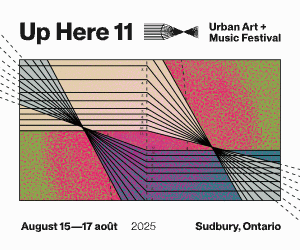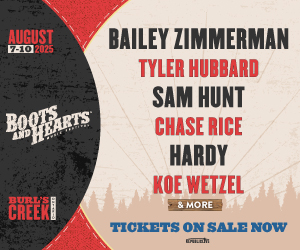Who made HU? The Ancient History of Heavy Metal’s Newest Spawn
Don’t run for the hills, stick around and get to know the Mongolian folk metal band taking the world by storm.
By Christine Leonard
- Published on
Millions of YouTube viewers agree, The Hu’s reverberating pulse is as alluring as it is invigorating. The product of post-Soviet Union independence and a fierce determination to preserve Mongolia’s musical heritage, The Hu was chiefly conceived in 2016 by B. Dashdondog, the band’s 52-year-old producer and songwriter who goes by Dashka. Speaking to RANGE through a translator from Mountain View, California, where they’re getting ready to perform with Five Finger Death Punch, the band confirms their excitement and satisfaction in sharing their galloping anthems with an international audience. “I enjoy Canada so much,” says founding member Nyamjantsan “Jaya” Galsanjamts. “Seeing your nature and environment gives us such a peaceful vibe. All of the people are very friendly, and because of all the beautiful nature you have you might have that great peaceful energy yourselves. It truly reminds me of home so much.”
Adapting modern — and, yes, Western — influences into their ethno musical pathos, the ensemble melds together traditional elements such as the morin khuur (a fiddle shaped to resemble a horse, its strings and bow made of horsehair), a tsuur (Mongolian flute), a tumur khuur (Jew’s harp), and a Mongolian guitar known as a tovshuur. Plus, of course, the electric guitar, bass, and a good old blast of rock and roll percussion.
Swelling from a quartet to an eight-piece orchestra during tours, it takes a steady hand on the reins to keep the power and playfulness of the band in check. “We are all professionals with extensive music backgrounds,” explains bassist and backing vocalist Nyamdavaa “Davaa” Byambaa. “I actually performed in the State Philharmonic Symphony. When we started everybody had to audition in order to create the band. Dashka had worked for a decade to create this band, and he had this vision, and we were the missing pieces of that puzzle. I think the most important things are your skillset and your character. You need to put out an incredible amount of hard work to tour around the world. You have to be up to the task and still have the ability to survive all of the things, the attention, and everything that you actually may face.”
Prized for their energetic live shows, refreshing approach to musical innovation and authentic content, The Hu has been embraced by appreciative hardcore music fans far and wide. Not far removed from the demonic growls of their fellow heavy metal groups, The Hu utilizes the guttural drone of Mongolian throat singing to add depth and dimension to their headbanging compositions. Dubbing their signature style “Hunnu Rock” — from the Mongolian root word for human being: “hu” — The HU slowly built their impressive debut LP, The Gereg (2019), over the course of seven years, cramming in “as much of Mongolia’s musical culture as they could into a rock style,” says Dashka.


“The Gereg album was a great success for us,” Jaya agrees. “It was our debut and it helped us be known for our culture, our unique style and it created a vibe where the ‘Hunnu Rock’ genre was accepted into the world. It opened so many doors including working with legendary artists like Metallica, Lzzy Hail (Hailstorm), Papa Roach and so many others. Overall, it brought a lot of success to us as artists and performers, but at the same time it brought a knowledge of Mongolia and shed another light to Mongolia from the world stage. It brought the world to the Mongolian culture itself and the music environment we have. It showed how extensive the knowledge and history of music is in Mongolia.”
Intertwining such divergent concepts may seem counterintuitive to some, but for The Hu the crux of their creativity lies in the dynamic tension between the past and the future. To say they thrive amid adversity, breaking territorial and temporal thresholds, would be an understatement. Every move they make is both tactical and practical. Something Dashka and Jaya pack into their saddle bags every time they enter the studio. “The band has an equal number of people, so there are eight members,” Jaya explains. “Some of our instruments are traditional and some are modern. Combining those two is the most important part of our ‘Hunnu Rock’ genre and what we represent. All of the instrumentation we create has to be balanced to represent the present and the past. The north and the south.”
Fated to bring nations together, like the Great Chenggis Khaan himself, the band’s lyrics evoke mountains, lakes, and forests while rekindling lines from old Mongolian ballads and battle hymns. The result is a surprisingly jubilant, instantly addictive and decidedly metal art form that tends to bring audiences together in a fist-pumping celebration of songs that offer no hope of singing along to – save the ever-present crowd-chat/chorus/incantation “Shoog! Shoog! Shoog!” A shamanic calling to the band’s ancestral Tenger spirits.
On the cusp of releasing their newest combined effort, Jaya, Davaa, and company are eager to see how their latest sonic onslaught will be received. “For Rumble of Thunder the theme of the songs are about all of the unique styles in the ‘Hunnu Rock’ genre,” Jaya says. “We’ve added more heavy metal and hard rock songs into it, so in that way we have tried to extend the characteristics of the ‘Hunnu Rock’ genre and add more variety into it. We hope to reach into the heart and soul of the listener. As the name goes, we want the Rumble of Thunder to resonate deep into their hearts. Hopefully they will enjoy listening to the album as much as we enjoyed making it.”
By Leslie Ken Chu
The rock stalwarts lean into vulnerability and nuance, proving that evolution doesn’t have to mean softening the blow.
By Cam Delisle
The pop veteran beamed into Rogers Arena Tuesday night with a glitchy arsenal of remixed hits—some faring better than others in her AI-styled end-of-the-world fantasia.













